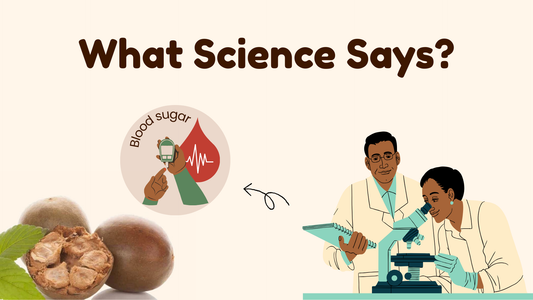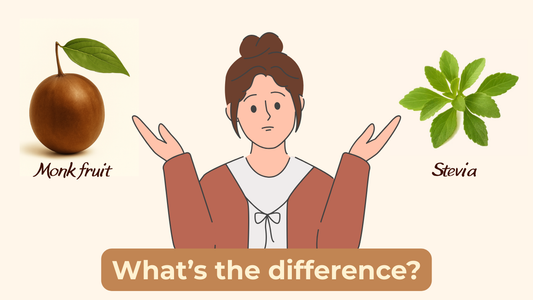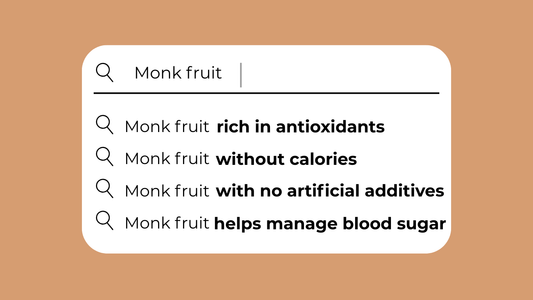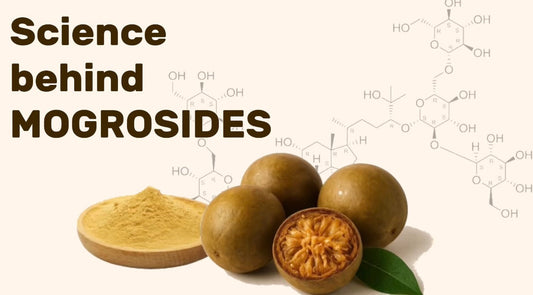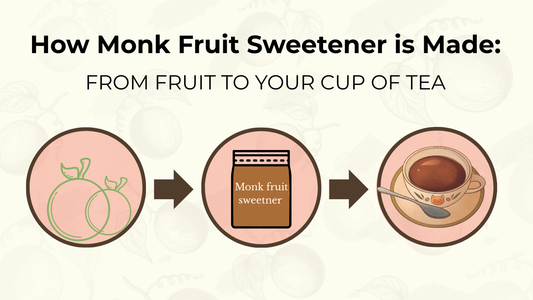Why India Needs a Sweetness Revolution
-
Storytelling: from chai in the morning to ladoos at night, sugar runs through Indian culture.
-
But sugar is also silently fueling diabetes, obesity, fatty liver, and inflammation.
-
The myths: brown sugar, jaggery, honey - none are guilt-free.
-
Artificial sweeteners (aspartame, sucralose) create mistrust.
-
Stevia started strong, but aftertaste held it back.
-
Monk fruit is the sweetener that finally gets it right: natural, safe, diabetic-friendly, calorie-free, and tasty.
Reason 1: Zero Calories, Zero Guilt
-
Deep dive into how sugar calories add up:
-
Average Indian sugar intake = 60–80 g/day (~240–320 kcal).
-
That equals 9–10 kg fat per year if not burned.
-
Explain how monk fruit = 0 kcal because mogrosides aren’t metabolized.
-
Show calorie math:
-
Cutting 300 kcal/day = 9,000 kcal/month = ~1.2 kg fat saved.
-
Over 1 year = 15 kg weight prevention without changing diet.
-
Compare with jaggery, honey, brown sugar: all high-calorie.
-
Explain obesity crisis in India, link with hidden sugars in packaged foods.
-
Mini-FAQs under this reason:
-
Does monk fruit really have zero calories?
-
Can I use monk fruit while dieting?
-
Will monk fruit stop sugar cravings?
Reason 2: Safe for Diabetics
-
Explain India’s diabetes crisis (100M+ diabetics, 130M prediabetics).
-
Show glycemic index table:
-
Sugar ~65, Jaggery ~84, Honey ~58, Brown sugar ~64, Monk fruit = 0.
-
Explain science of mogrosides: they don’t raise blood sugar or insulin.
-
Research evidence:
-
FDA GRAS approval.
-
Animal & human trials showing stable glucose levels.
-
Bust myths: jaggery and honey are NOT safe for diabetics.
-
Show cultural context: Indians giving “gur ki chai” to diabetics thinking it’s safer.
-
Explain monk fruit’s role in preventing long-term diabetic complications.
-
Mini-FAQs:
-
Can diabetics eat monk fruit daily?
-
Is monk fruit safer than stevia?
-
Does monk fruit reduce HbA1c levels?
Reason 3: Better Taste, No Aftertaste
-
Explain why taste matters in adoption.
-
Stevia’s problem: metallic, bitter aftertaste.
-
Artificial sweeteners: chemical taste.
-
Monk fruit: clean, sugar-like sweetness.
-
Include blind taste-test comparisons (sugar vs monk fruit vs stevia).
-
Highlight Indian recipes: chai, halwa, kheer - stevia alters flavor, monk fruit blends naturally.
-
Global perspective: why major brands (Coke Zero, protein powders) are shifting from stevia to monk fruit.
-
Mini-FAQs:
-
Does monk fruit taste exactly like sugar?
-
Can you bake with monk fruit without altering flavor?
-
Will monk fruit taste weird in chai?
Reason 4: Backed by Science, Safe for Long-Term Use
-
Artificial sweeteners face constant debates (gut health, cancer fears).
-
Monk fruit is different - backed by both tradition and modern science.
-
Traditional Chinese Medicine: 800+ years use for cough, sore throat, longevity.
-
Modern science:
-
Mogrosides = antioxidants.
-
Anti-inflammatory properties.
-
Studies on diabetes, obesity, cancer prevention, gut microbiome.
-
Regulatory approvals:
-
FDA (USA), EFSA (Europe), FSSAI-ready in India.
-
No side effects reported in long-term use.
-
Safe for: children, pregnant women, elderly, diabetics.
-
Mini-FAQs:
-
Is monk fruit safe for kids?
-
Can pregnant women use monk fruit?
-
Does monk fruit cause digestive issues like some sugar alcohols?
Reason 5: Perfect Fit for Indian Kitchens and India’s Diabetes Crisis
-
Sugar is deeply cultural in India (chai, mithai, festivals).
-
Monk fruit isn’t just for health freaks it works in everyday cooking:
-
Chai and coffee.
-
Kheer, halwa, ladoos.
-
Festival sweets (Diwali, Holi, Eid).
-
Smoothies, shakes, baking.
-
India’s unique challenge:
-
Diabetes rates exploding.
-
Awareness gap (people still think jaggery is healthy).
-
Need for a culturally acceptable, natural sweetener.
-
Why monk fruit fits:
-
Natural.
-
Tastes like sugar.
-
Works in traditional recipes.
-
Mini-FAQs:
-
Can monk fruit replace sugar in Indian sweets?
-
Does monk fruit caramelize like sugar?
-
Is monk fruit expensive in India?
Bonus Reason: Clean Blend, No Junk
-
Many brands dilute natural sweeteners with maltodextrin or hidden fillers.
-
At EPRA Farms, our blend = monk fruit + erythritol, nothing else.
-
Gluten-free, halal, kosher, FSSAI-approved.
-
Transparency: lab-tested and certified.
-
Positioned as India’s cleanest monk fruit sweetener.
Conclusion: Why Switch Today
-
Recap of 5 reasons:
-
Zero calories.
-
Safe for diabetics.
-
Better taste.
-
Backed by science.
-
Perfect for Indian kitchens.
-
Add cultural angle: sugar is tradition, but tradition must evolve.
-
Add emotional close: monk fruit is sweetness without fear, without guilt, without compromise.
-
Position EPRA Farms as leader of the clean-sweet movement in India.


